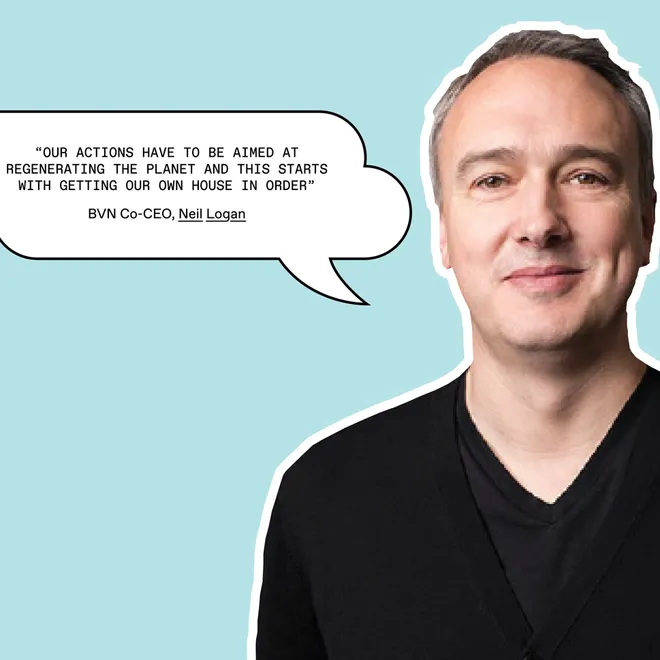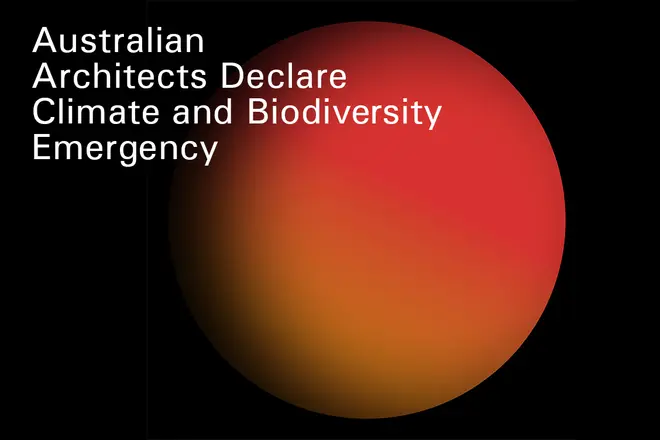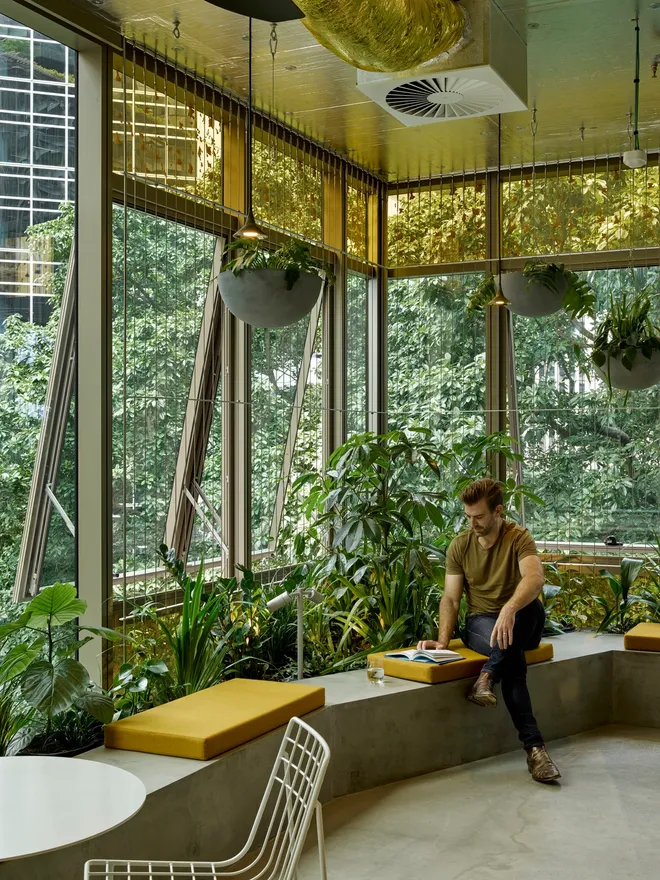BVN Stories — November 21, 2021
BVN’s Journey to become Climate Positive
When BVN embarked on its own journey towards becoming “climate positive” the first goal was getting our own house in order. We felt that once we achieved this, we’d be well placed to begin advocating for similar standards in the buildings we design. After all, we are part of an industry responsible for around 25% of Australia’s total emissions. And so, in early 2021 we took our first steps… To be certified, BVN had to meet the requirements of the Climate Active Carbon Neutral Standard (formerly the National Carbon Offset Standard). Broadly, this meant that to achieve certification, we measure emissions, reduce these where possible, offset remaining emissions and then publicly report on our achievements.
A carbon audit of every aspect of the business revealed exactly where we were treading lightly, and where we stomped heavily. It was confronting, and it quickly became clear that transforming BVN’s own operations into net-zero ones was going to be complex and challenging. It would turn out to also be very empowering.
The audit showed that BVN’s biggest carbon footprint was in air travel to meet with clients and oversee site developments outside its studios in Sydney, Brisbane, New York and London. These flights in fact accounted for 41% of BVN’s total annual carbon footprint - a whopping 656 tonnes of carbon dioxide emissions.
Neil Logan and Ninotschka Titchkosky – our co CEO’s – decided to tackle this head-on and set up an in-house #infrequentflyers club, enticing staff to find alternative solutions to flying running a points system as a motivator. To account for the carbon emitted by the absolutely-necessary travel, we also purchased carbon offsets to the same amount, from Green Fleet and Aboriginal Carbon Foundation. Then we went a step further. Rather than settle for being carbon neutral we made the decision to be carbon positive – to give back more to the planet than we used. To leave it not just as it was, but in a better state, than when we began.
Another major area of carbon emission was energy and this was an easier obstacle to tackle. We switched to a green energy provider, using 100% certified green power. Other changes were made in relation to suppliers – switching to sustainable products and supply chains – and even internal catering. Right down to the staff kitchen teabags!
All these changes earned BVN accreditation as a “Climate Active” organisation 
Our next step has been to look at the areas we already have expertise in, with regard to sustainable architecture practice, and deepen these. In our ranks are specialists in timber work; in designing to mitigate embodied carbon and waste; in “radical adaptation” – taking old buildings and giving them another life. And, most uniquely, in “designing with country” – a methodology centred around caring for place.
It seemed BVN was poised to take great strides towards net-zero buildings. But another challenge emerged. While buildings can be designed for sustainability, they miss the mark without supporting systems being transformed as well. Sustainability is complex.
Ducted air conditioning. Gas heating and cooking. Lengthy and wasteful construction sites. All challenges. In what’s become BVN’s trademark approach, the firm has begun tackling these as much as the design of the buildings themselves.

BVN's SR2 (Systems Reef 2) project is the world’s first 3D printed air distribution system. Developed out of a research collaboration between BVN and the University of Technology Sydney, it is made from recycled waste plastic and designed for circularity.
The issue of (carbon-heavy) ducted air conditioning has been mitigated by a new prototype called SR2 currently being tested for rollout. It’s robotically 3D printed and made from recycled plastic hospital waste. Light and rounded it diffuses air rather than blowing it through flat, angled steel frames, making for a far more efficient flow of air. Within 12 months SR2 is likely to replace ducted air conditioning in several of BVN’s developments.
Gas systems for residential developments are the preferred option by real estate agents focused on sales based on features. But the health, environmental and financial costs are heavy. BVN is lobbying clients hard to resist the real estate advice and bypass gas for (green-powered) electrical fittings. Going a step further the firm is researching the market to find alternatives to gas stove-friendly woks. A full white paper will support lobbying efforts by helping to equip developer clients with market data to influence decision making around choosing electricity over gas.

Santa Sophia Catholic College, BVN. Photography by Daniel Kuke.
Santa Sophia School in Sydney’s greater west, has been designed as a set of prefabricated, modular pieces. Like toy building blocks, they’ve been assembled on-site this year in record time and with absolutely no waste going to landfill. The shift away from on-site construction to modular build has been another example of changing not just the product but the system.
For BVN, accelerating net zero as a business has been about looking at itself first, confronting its own footprint and gathering the will of the collective. And then, seeing that it could do more than the sum of its parts. While also designing with a sustainability lens, the firm is simultaneously broadening its sphere of influence, to find those systems that can enable exponential change.
To learn more about “Climate Active” accreditation, read more here.
Underpinning BVN’s pathway to accelerating net-zero, is its challenge every day, to be “smarter, more creative and better for the planet”. It’s a simple motto but a powerful one. To follow BVN’s journey to becoming “Climate Positive” follow us on LinkedIn.





